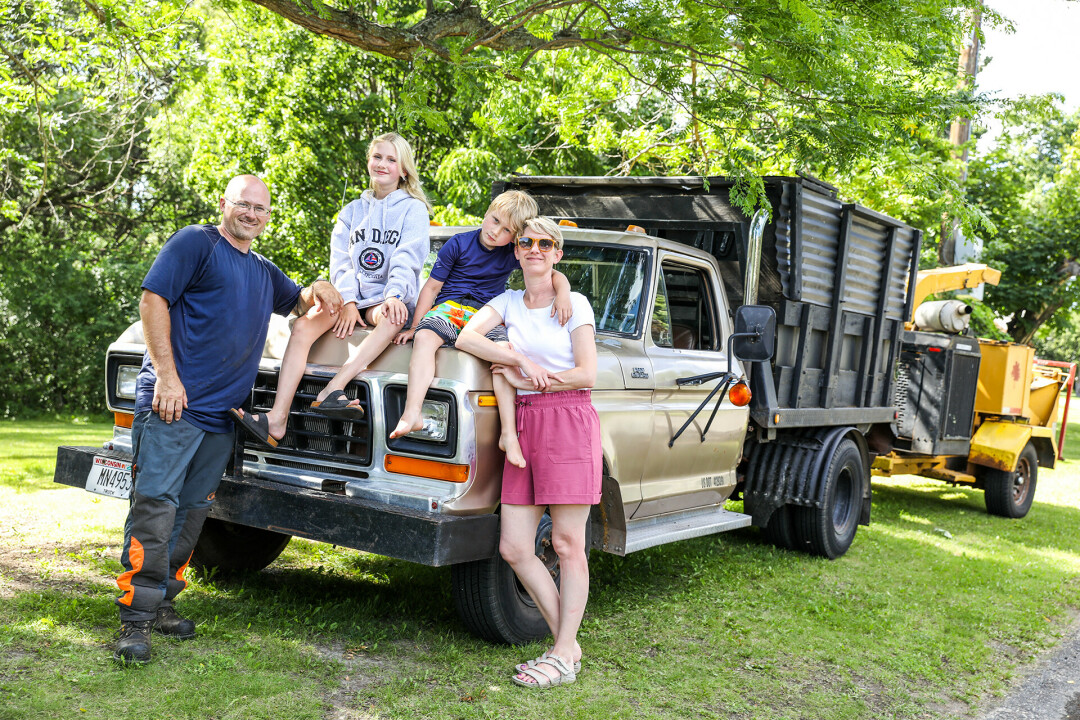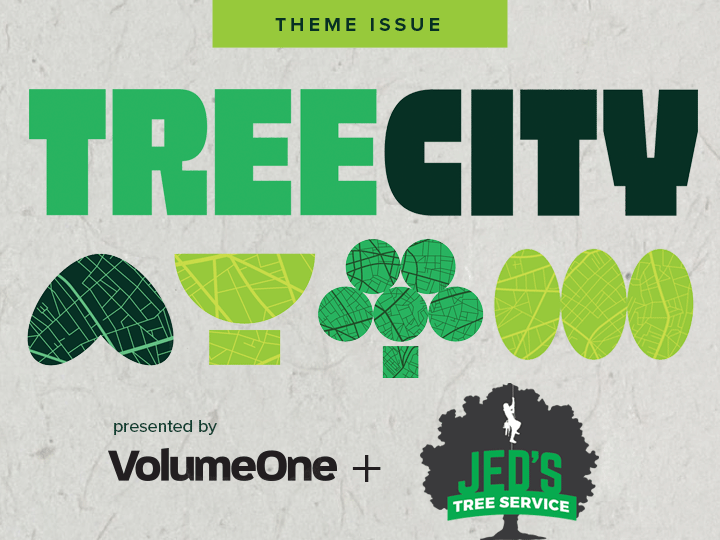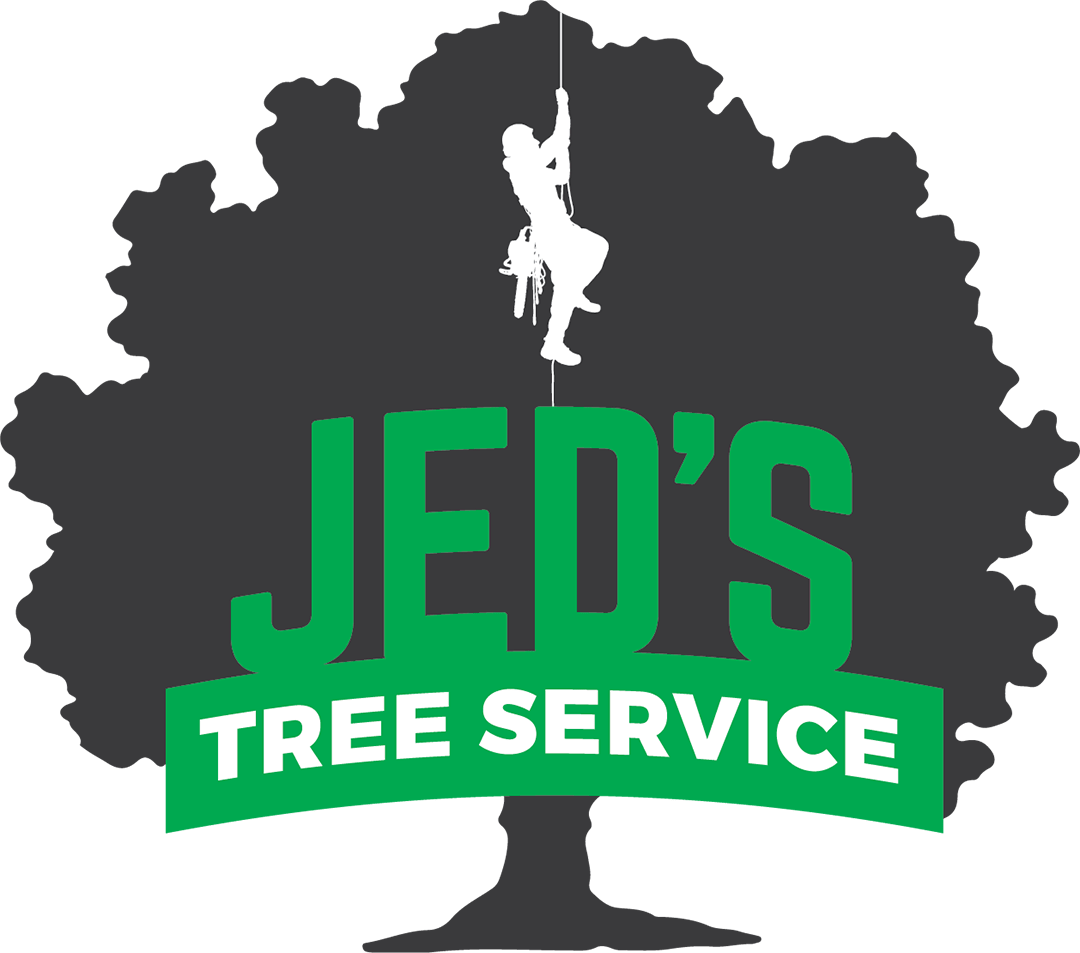HIRE CERTIFIED, HIRE SAFE: Larson Tree Care
Emerald Ash Borer and Oak Wilt are having rampant effects on Wisconsin Trees. Get a tree risk assessment today.
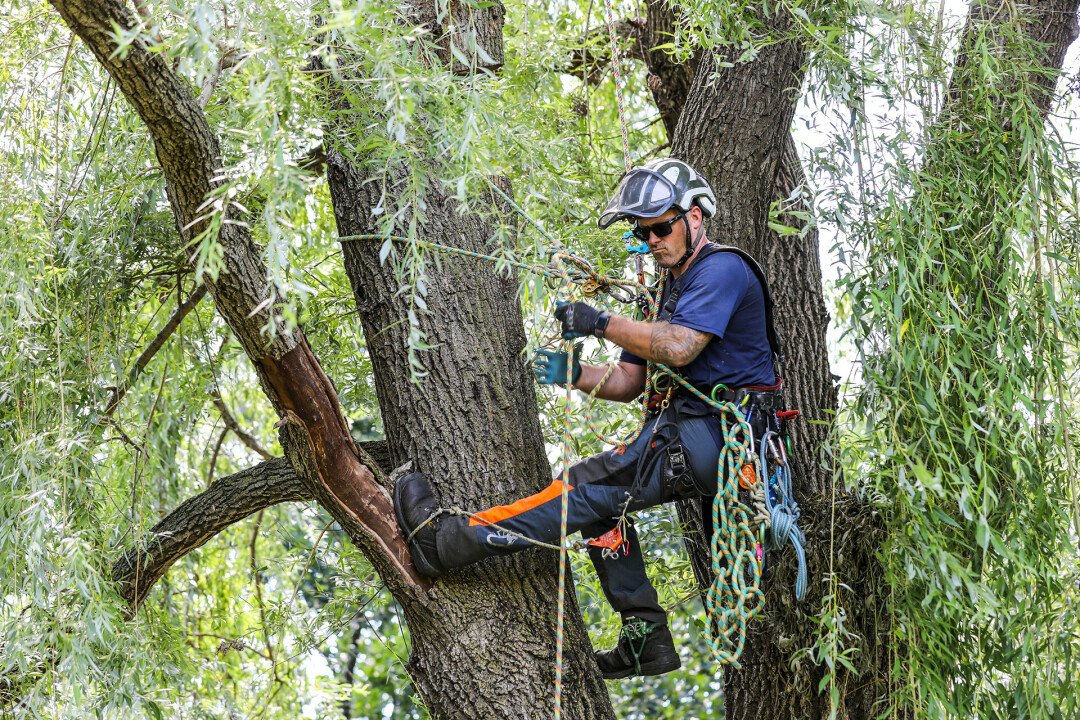
By now, locals have either had direct experience in dealing with the effects of Emerald Ash Borer or know someone who has, and as we head into mid-summer, the City of Eau Claire’s Forestry Division is expediting its removal of infested ash trees. But how do you know if trees on your own property are infected, and what do you do about it?
“It really comes down to having somebody who knows what they’re looking at and is experienced, versus somebody that just cuts down trees,” said Dalton Larson, owner and head arborist of Larson Tree Care in Eau Claire. As one of the only International Society of Arboriculture certified arborists in the area, Dalton is uniquely qualified to care for, maintain, and, as necessary, remove trees.
The first step in figuring out if your property’s trees have been affected by Emerald Ash Borer or Oak Wilt: Get a tree risk assessment. Larson Tree Care performs timely inspections and consults with homeowners about potentials for tree failure (broken branches, roots, etc.) and consequences of it (property damage, personal injury, etc.).
“Overall, what we’re looking for in a risk assessment is the overall health of your trees and any hazards that may be evident,” Dalton explained. “Tree risk assessment is based on the formula of probability of failure times the potential of risk (or potential targets). This formula helps determine the urgency and need for mitigation.” In the forestry industry, there are three levels or standards for an assessment:
LEVEL ONE: A limited visual inspection, which includes looking at the tree from the ground and reviewing the overall health of the canopy. This includes looking for damage relating to fungal disease and pests.
LEVEL TWO: A physical inspection including a 360-degree canopy inspection, looking for defects, rot, cavities, dead branches, bad lean, and more.
LEVEL THREE: A physical inspection including a canopy inspection by climbing the tree or using a bucket truck/lift; taking soil or tissue samples; conducting a potential root excavation.
For tree species outside of Ash, Oak, and Elm, the answer is not always to cut the tree down completely, which is why consultations between a certified arborist and the homeowner are important. “There are always options. If a homeowner likes their tree(s) they may not be quick to just cut it down. Too often people are cutting down trees that really don’t need to be,” Dalton said. “With some mitigation, some trees may be saved. It’s about timely management and knowing the right cultural practices specific to each tree species.”
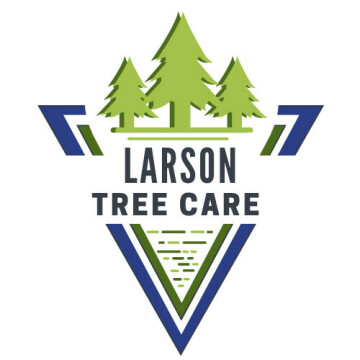
The science behind tree care is exactly what Dalton pursued in college after his six-year service in the military. As a certified arborist of over 12 years, Dalton is also an active member of the Wisconsin Arborist Association, frequent guest instructor within the Urban Forestry Department at UW-Stevens Point, and a state judge for the Wisconsin Tree Climbing Competition (slated for July 27-28 this year in River Falls). While he fell in love with the industry and tree climbing years ago, two things have always remained at the forefront of his work and the business: safety and education.
“I kind of fell into a tree climbing class, and I loved it – I pivoted my major to focus on tree care,” Dalton recalled of his college career. “But as far as dangerous jobs go, this is one of the most dangerous next to crab and deep-sea fishing. People who aren’t qualified to do this work can get in over their head, and quite often get injured. Larson Tree Care focuses primarily on safety and doing things the right, safe way.”
Industry standards are a crucial aspect of safely and effectively treating trees, whether it be maintaining the general health of a tree to treating a devastator like the Emerald Ash Borer or Oak Wilt, both of which are affecting the Chippewa Valley. Knowing the timeframe for when live trees should be pruned is important. “In general, live Oaks and Elms should be pruned between late October and Mid-April,” Dalton explains. “If work is performed on those trees within the growing and wet seasons, they are more susceptible to bug infestation and fungal infections.” As tree care is performed year-round, the work associated with these tree species may be completed in the winter months.
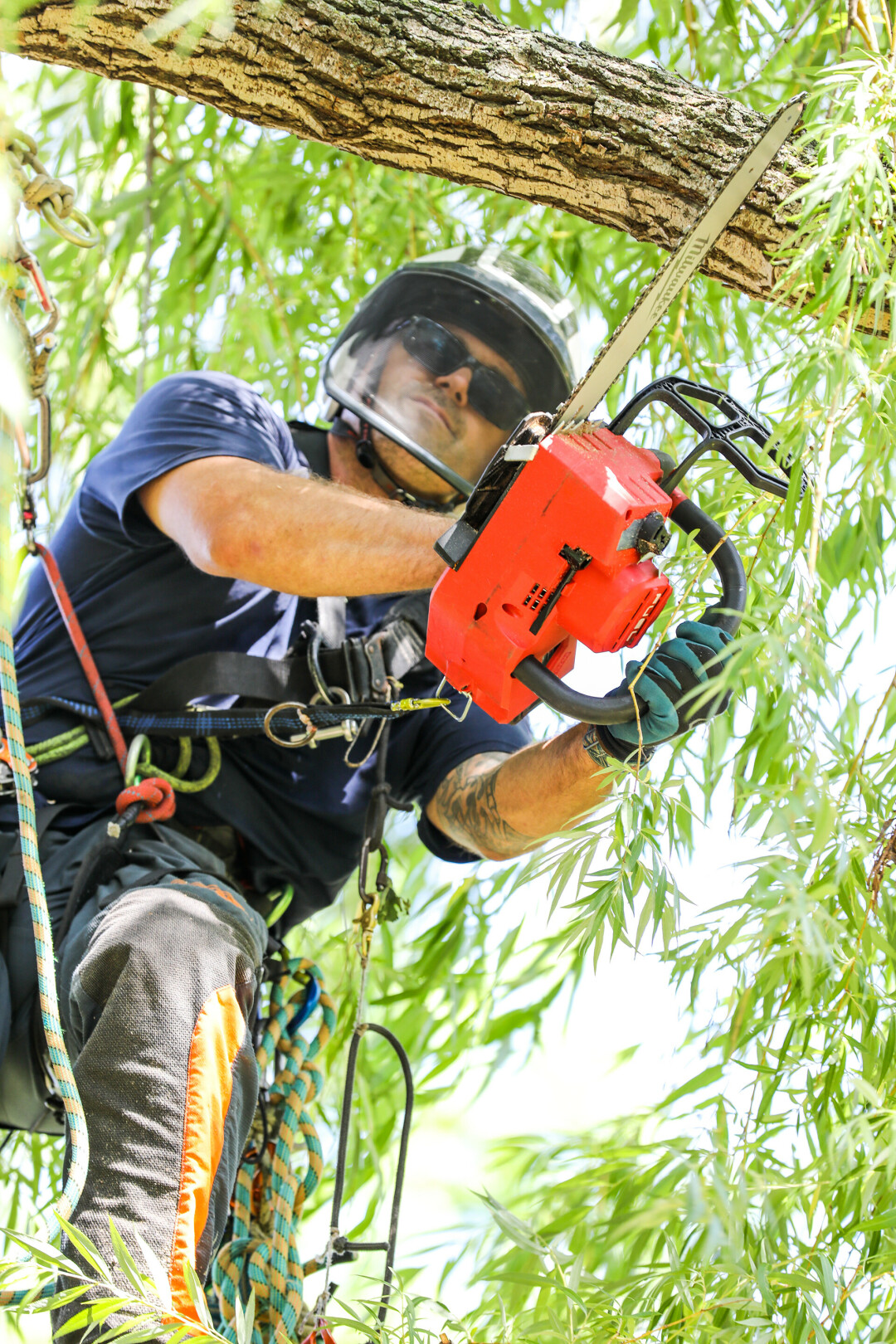
“As a homeowner, if you haven’t had your trees treated for Emerald Ash Borer within the last three years, you’re going to see decline in your Ash tree. Due to the decline, it starts to get more and more difficult to remove them, and more expensive to do so,” Dalton explained.
While a healthy tree is an incredibly stable structure, the longer they are infested, the more dangerous it is to safely and efficiently remove the tree, which increases cost. Both Oak Wilt – affecting all types of Oak trees – and Emerald Ash Borer are identifiable through a tree risk assessment, as are a variety of other potential issues.
From rural to city properties, Larson Tree Care offers free risk assessment consultations and provides free estimates, taking an honest and safe look at your property’s trees. “There’s a lot to consider and every tree is different. With pests, like Emerald Ash Borer, and diseases, like Oak Wilt, it’s like that, too. When one tree gets it, it could spread quickly to the trees around it, which creates a domino effect leading to an epicenter event.”
Call today to schedule a tree risk assessment to discuss the health of your trees. Larson Tree Care provides free estimates on any work needed, including stump removal, tree pruning, storm removal, and clean up.
